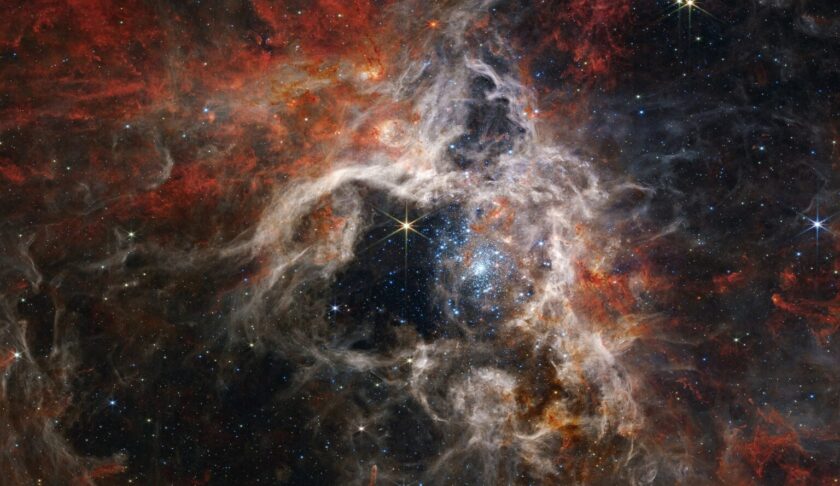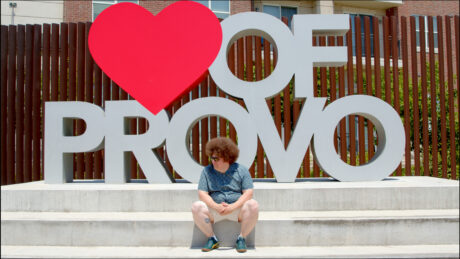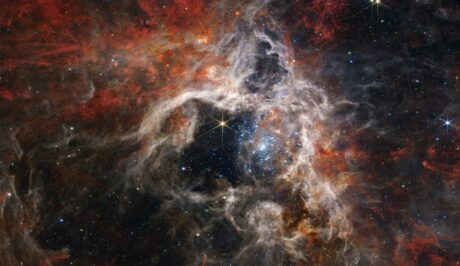UVU-led team finds evidence challenging universe expansion rate models

Courtesy NASA, ESA, CSA, STScI, Webb ERO Production Team
In this mosaic image stretching 340 light-years across, Webb’s Near-Infrared Camera (NIRCam) displays the Tarantula Nebula star-forming region in a new light, including tens of thousands of never-before-seen young stars that were previously shrouded in cosmic dust. The most active region appears to sparkle with massive young stars, appearing pale blue.A new Utah Valley University study is providing new evidence in a debate astronomers across the world haven’t been able to agree on — how fast the universe is expanding.
The findings may add more fuel to what has been known as the Hubble Tension, a disagreement between scientists on how to best calculate the expansion rate of the universe.
According to a study led by UVU astrophysicist Joseph Jensen in collaboration with other astronomers from Arizona, Maryland, Hawaii and Italy, the universe is expanding faster than current theories predict.
The researchers used ultra-precise data from NASA’s Hubble and James Webb telescopes, and the agency’s Dark Energy Camera, which is mounted on the U.S. National Science Foundation’s Víctor M. Blanco Telescope, to calculate galactic distances through an independent measuring method. According to a UVU news release, “this allowed them to bypass traditional distance measurement methods.”
“This is a major step forward,” Jensen said in a statement. “By using a completely independent method with the power of [the James Webb Space Telescope], we’ve confirmed that the universe is expanding faster than our best theories say it should. That means there’s likely something fundamental that we’re still missing in our understanding of the cosmos.”
Astrophysicists have debated the growing discrepancy between the predicted and observed expansion rates, aiming to determine whether the inconsistencies are because of measurement errors, or theoretical flaws.
The new study calculated the current universe expansion rate, or Hubble constant, to be 73.8 kilometers per second per megaparsec, a number significantly higher than the 67.5 value predicted by widely accepted models, according to the release.
“We’re not saying the standard model is wrong,” Jensen said. “But it’s clearly incomplete. These results help us move closer to understanding what might be missing.”
Essentially, this new data gives clues on how old the universe is, what it is made of, and how it was created, the university says. Researchers hope to reach more precise answers in the next few years through the telescopes’ observations.
In recognition of the team’s approach NASA awarded them three additional James Webb Space Telescope observing programs to expand measurements to more than 100 elliptical galaxies, bringing about $220,000 in research funding to Utah Valley University.
Utah News Dispatch is part of States Newsroom, the nation’s largest state-focused nonprofit news organization.



